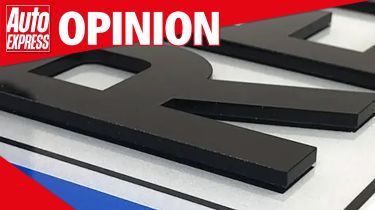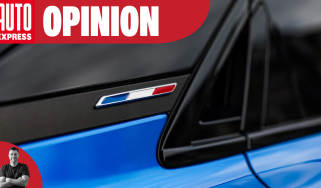UK 3D and 4D number plate rules are unclear and confusing
Regtransfers CEO, Mark Trimbee, weighs-in on the confusion around 3D and 4D number plates, calling for clearer guidance for motorists

Do you know the rules that set out what you may and may not display on your number plates? Do you know what the penalties can be if you display plates that don't comply with those rules. If you answered "Yes" then well done. If you answered "No", then you are certainly not alone.
With a £1,000 fine, MoT failure and possible confiscation of your private registration (if you have one) riding on it, you'd probably appreciate a link to the full information from DVLA or the DfT. Unfortunately, so far as we know, there isn't one webpage or government leaflet that gives all the information you need to be sure you won't get pulled over for some plate transgression you knew nothing about. As judges in TV dramas like to point out, ignorance of the law is no excuse.
When the current British Standard for number plates was published at the end of August 2021, there was a period of adjustment while number plate manufacturers and suppliers made sure they knew exactly what to supply to motorists.
For the most part, things remained pretty much the same. Possibly the issue that caused the most uncertainty, and spawned the most conflicting articles and news reports, was that of 3D and 4D number plates. Very few people were confident that they knew for certain whether or not 3D gel plates, and the plate variant idiotically dubbed "4D" number plates by someone, were legal. Clarification, when it came, was really more a cop-out and a thinning of the fog. Even now, there are points that manufacturers, motorists and the police don't agree on, as we'll see.
There is one thing that everyone seems to agree on: the faux 3D effect achieved by printing shades or textures on the flat characters on number plates is no longer permitted. You are definitely not allowed to buy or sell plates of that type for use on UK roads, or to fit them to vehicles for road use.
But then we come to those 3D gel and 4D plates. These variants, it seems, manage to be both legal and illegal at the same time. The DVLA hedges its bets a little and says that 3D gel and 4D plates are legal as long as they comply with the British Standard for plates. The standard sets out a specification covering colour, reflective properties, character sizes etc. What the standard doesn't dictate is the height above the plate to which the characters on 3D and 4D plates may protrude.
A number of motorists, notably quite a few London taxi drivers, have been stopped by the police and issued penalty notices because the characters on their 4D number plates stood out too far and were difficult to read. If this happens to you, ask the officer attending what the legal height limit is on these characters. If they can cite an official source for the information, we'd love to hear about it because the UK's biggest independent number plate dealer has not been able to find one. Anyway, to be on the safe side, Regtransfers will only supply 4D plates with characters raised to 3mm, not the 5mm or 6mm that has reportedly caused the police stops.
As we've said, the official gov.uk hub doesn’t provide fully comprehensive information about plate legality. Some plate manufacturers and dealers have attempted to provide resources that plug this gap, including our own at Regtransfers, but we really would rather see the government dispel all doubt by compiling an appropriate official resource.
Do you like or loathe 3D and 4D plates? Tell us your opinion in the comments section below...
Find a car with the experts




